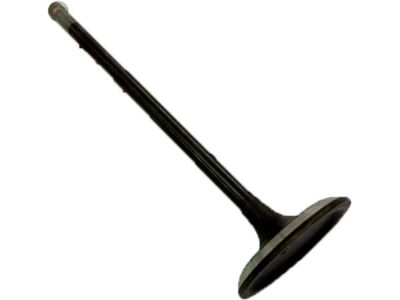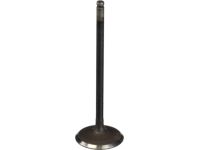×
- Hello
- Login or Register
- Quick Links
- Live Chat
- Track Order
- Parts Availability
- RMA
- Help Center
- Contact Us
- Shop for
- Honda Parts
- Honda Accessories

My Garage
My Account
Cart
Genuine Honda Crosstour Intake Valve
Engine Intake Valve- Select Vehicle by Model
- Select Vehicle by VIN
Select Vehicle by Model
orMake
Model
Year
Select Vehicle by VIN
For the most accurate results, select vehicle by your VIN (Vehicle Identification Number).
2 Intake Valves found
Honda Crosstour Intake Valve
Intake Valve: Intake Valve is also an important component of Honda Crosstour vehicles that boost the vehicle's engine performance as well as the combustion process. Another sub assembly is its primary function of controlling the air and fuel mixture that passes through to the engine by requiring timed operation of the valve. Intake Valve has adverse effects to combustion and power output of the engine thus requiring regular replacement when it gets damaged. It is noteworthy that the years have to do with potentialDisposable changes in the design of Intake Valves but the particulars are not outlined. This steps include the following, The Intake Valve is compressed by special tools then the new one placed and fixed correctly in its place by compressing the valve spring. Hence it is very important to ensure that the Intake Valve is clean from carbon and is well positioned in the Honda Crosstour vehicles to ensure efficiency in performance of the engine.
In search of affordable OEM Honda Crosstour Intake Valve? Consider browsing through our extensive inventory of genuine Honda Crosstour Intake Valve. Not only do we provide market-leading prices and a manufacturer's warranty, but we also pride ourselves on exceptional customer service and swift delivery.
Honda Crosstour Intake Valve Parts Questions & Experts Answers
- Q: Do valve clearances generally need adjustment, and how is the proper valve adjustment checked and performed on Four cylinder engine on Honda Crosstour?A: Valve clearances generally do not need adjustment unless valvetrain components have been replaced or a valve job has been performed. The simplest check for proper valve adjustment is to listen carefully to the engine running with the hood open; if the valvetrain is noisy, adjustment is necessary. The valve clearance must be checked and adjusted with the engine cold. Remove the Valve Cover and place the number 1 piston at Top Dead Center (TDC) on the compression stroke. With the engine in this position, the number 1 cylinder valve clearances can be checked and adjusted. Start with the intake valve clearance by inserting a feeler gauge of the correct thickness between the valve stem tip and the adjusting screw on the Rocker Arm. Withdraw it to feel a slight drag; if there's no drag or a heavy drag, loosen the adjuster nut and back off the adjuster screw. Carefully tighten the adjuster screw until a slight drag is felt on the feeler gauge upon withdrawal. Hold the adjuster screw with a screwdriver to keep it from turning and tighten the locknut, then recheck the clearance to ensure it hasn't changed. Repeat this procedure for the other intake valve and the two exhaust valves. Rotate the Crankshaft Pulley 180 degrees clockwise to bring the number 3 cylinder to TDC, then check and adjust the number three cylinder valves. Continue by rotating the crankshaft pulley 180 degrees clockwise to bring the number 4 cylinder to TDC and check and adjust those valves, followed by the number 2 cylinder valves after another 180-degree rotation. Finally, install the valve cover.














